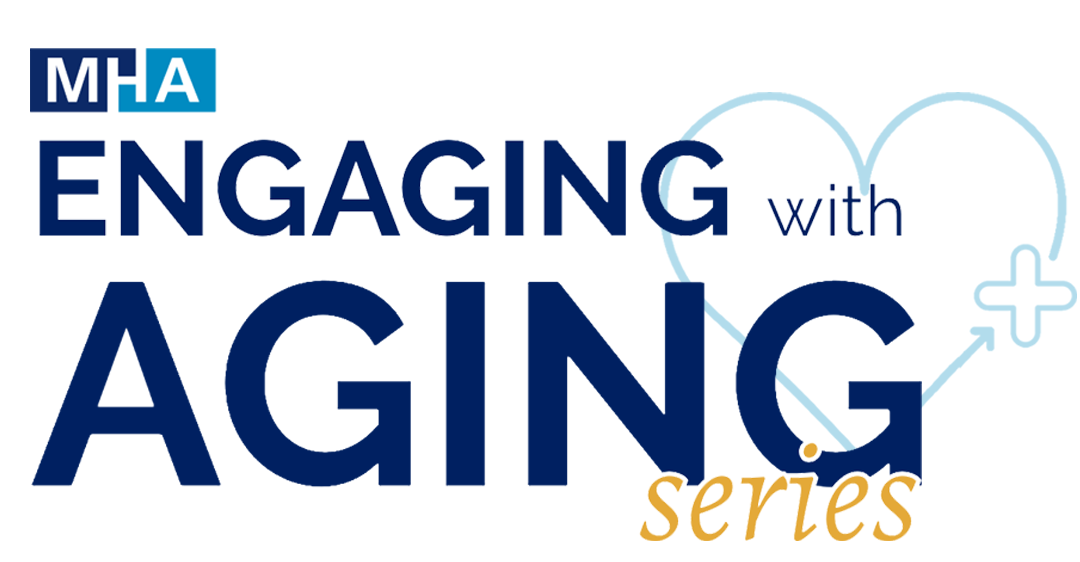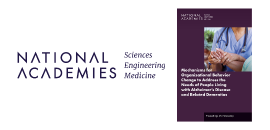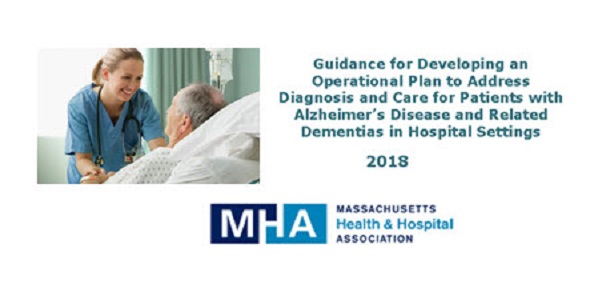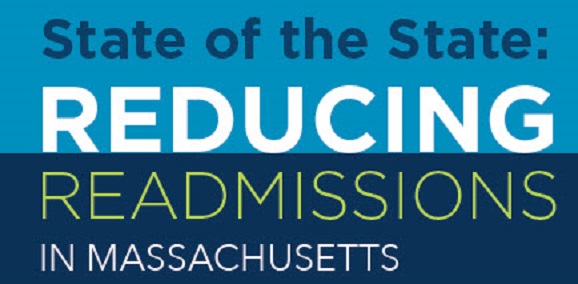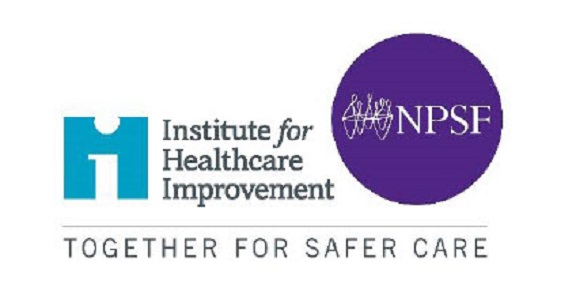In this installment of the Engaging with Aging Series, MHA and healthcare leaders lead an informative session on Alzheimer’s disease and related dementias. By watching this webinar, you will gain an overview of Alzheimer’s disease and related dementias in the U.S. and Massachusetts, learn current guidelines for the diagnosis and treatment of Alzheimer’s and related dementias, and explore best practices for care and management of patients with Alzheimer’s and related dementias.
Category: Improving Patient Care
Patient Safety Awareness Week: March 12-18
Includes three free webinars hosted by IHI.
2023’s Patient Safety Awareness Week, led by the Institute for Healthcare Improvement (from IHI), is March 12-18!
From IHI:
Patient Safety Awareness Week is an annual recognition event intended to encourage everyone to learn more about health care safety. During this week, IHI seeks to advance important discussions locally and globally, and inspire action to improve the safety of the health care system — for patients and the workforce.
Patient Safety Awareness Week serves as a dedicated time and platform for growing awareness about patient safety and recognizing the work already being done.
Offerings include three free webinars:
- March 14 | 12-1pm ET: Back to Our Purpose: The Reboot of Safety
- March 15 | 3-4pm ET: Partnering with Patients to Improve Diagnostic Safety
- March 6 | 11am-12pm ET: Incorporating CPPS™ Certification into Academic Curriculum
Find out more from IHI here.
New National Academies Report:
Mechanisms for Organizational Behavior Change
The National Academies has released a new report, Mechanisms for Organizational Behavior Change to Address the Needs of People Living with Alzheimer’s Disease and Related Dementias.
The report is available here, and more detail form the National Academies is below:
Patients diagnosed with Alzheimer’s disease and related dementias (ADRD) rely on family members, their community, and the health care system for progressively increasing support over the course of their disease. These people receive care through a frequently siloed health care system across hospitals, nursing homes, ambulatory care settings, and long-term care settings, as well as community- and home-based care. As the number of people living with a diagnosis of ADRD continues to grow, so does the need to provide better support for these people and their caregivers. The National Institute on Aging (NIA) Division of Behavioral and Social Research suggests that organizational behavior change will be needed for health care systems to integrate all of the services and supports required to provide high-quality care for people with ADRD.
NIA sponsored a workshop hosted by the National Academies of Sciences, Engineering, and Medicine to explore mechanisms to improve the quality of care for people living with ADRD and the potential of innovative payment models to incentivize health care systems to make the necessary systemic changes. The workshop convened a diverse array of experts in fields including nursing, geriatrics, health care economics, health care services research, quality measurement, social work, medical ethics, law, health care finance, and health care policy. This publication summarizes the presentation and discussion of the workshop.
WEBINAR: Exploring Age and Dementia Friendly Design for Our Built Environment
In April 2023, the Massachusetts hosted a webinar entitled “Exploring Age and Dementia Friendly Design for Our Built Environment: How to Optimize Health and Wellness Through Physical Infrastructure Design”
The program’s slide presentation, as well as the Age and Dementia Friendly Design Guide, can be accessed below:
Caring for Patients with Alzheimer’s Disease and Related Dementias
In June 2017, the state’s Alzheimer’s and Related Dementias Acute Care Advisory Committee issued its final report with a goal of outlining strategies to provide optimal care to persons with dementia in acute care settings.
Surviving Sepsis Campaign
The international Surviving Sepsis Campaign (SSC) is a joint initiative of the Society of Critical Care Medicine (SCCM) and the European Society of Intensive Care Medicine (ESICM), led by multidisciplinary international experts who are committed to reducing mortality and morbidity from sepsis and septic shock, which are leading causes of death worldwide.
Massachusetts Sepsis Consortium
Every 2 minutes someone dies from sepsis in the U.S. – that’s more than from prostate cancer, breast cancer and AIDS combined. Sepsis is a medical emergency in the Commonwealth and the Massachusetts Sepsis Consortium brings together leading experts and advocates from across the state to raise awareness and save lives.
The Massachusetts Sepsis Consortium brings together a group of organizations essential to planning and executing an effective public health response to sepsis. It also provides ongoing strategic direction for statewide initiatives to improve the prevention, diagnosis, and treatment of sepsis, and supplies the administrative backbone necessary to sustain progress. The consortium model is well-suited to addressing multifaceted, persistent challenges like sepsis that require the focus of dispersed parties with expertise and authority but whose impact would be limited if acting alone. Read the Massachusetts Sepsis Consortium charter.
State of the State: Reducing Readmissions in Massachusetts
Prepared by the Massachusetts Health & Hospital Association and Collaborative Healthcare Strategies
Incentives targeting readmission reduction are intended to improve the delivery of care across settings and over time, and to reduce the losses and inefficiencies created by avoidable returns to the hospital.
The public and private sector call for hospitals to reduce readmissions is not new. Incentives targeting readmission reduction are intended to improve the delivery of care across settings and over time, and to reduce the losses and inefficiencies created by avoidable returns to the hospital.
Over the past several years, incentives to reduce readmissions have been introduced into the Massachusetts market in payer- and diagnosis-specific ways. Individually, these incentives have served to stimulate improvements in care for some groups of patients. An unfortunate consequence of payer-specific and diagnosis specific incentives has been the emergence of balkanized efforts to find and serve certain patients with readmission risks – but not others. As a result, readmission rates have not dramatically improved, and the pace of improvement is not quick enough.
It is now clear that financial success under a wide variety of payment models and performance incentives will reward providers for minimizing hospital utilization – whether through population management in accountable care organizations, bundled payments for 90-day episodes of care, or value-based purchasing.
No Place Like Home: Advancing the Safety of Care in the Home
There truly is no place like home, and care in the home holds many potential benefits, including support for person-centered care. Care recipients generally prefer to be at home, where they may have more autonomy than in inpatient settings. Care in the home is not without its challenges, however, and these challenges may affect both care recipients and everyone who supports them. Existing data suggest that preventable harm to care recipients is an important issue in the home setting. In addition, both home care workers and family caregivers may be physically or emotionally harmed as they provide care.
The safety of care provided in the home has not yet received nearly as much attention as patient safety in hospitals and other clinical settings, despite the fact that the home has become the site of care for many people. In 2016, more than 2 million personal care attendants provided care in the home, according to the US Department of Labor, and this number is expected to grow by 40 percent in the next decade. Care in the home comprises a number of different services, including personal care, home health care, hospice, palliative care, and, through some specialized programs, primary care and hospital-level services. These services are provided by a variety of home care workers with a range of training and expertise. In addition, many aspects of care are provided by family caregivers.
AHRQ’s April 2018 Guide for Patients & Family Engagement
The Guide to Improving Patient Safety in Primary Care Settings by Engaging Patients and Families is a resource to help primary care practices partner with patients and their families to improve patient safety. The Guide includes materials and resources to help primary care practices implement patient and family engagement to improve patient safety.

